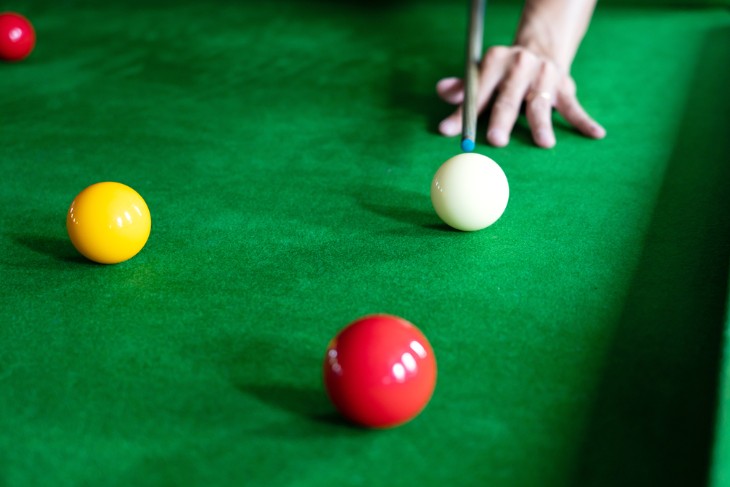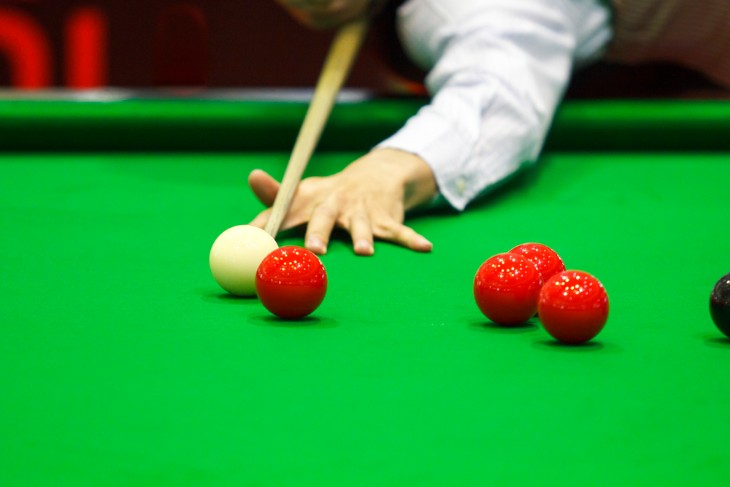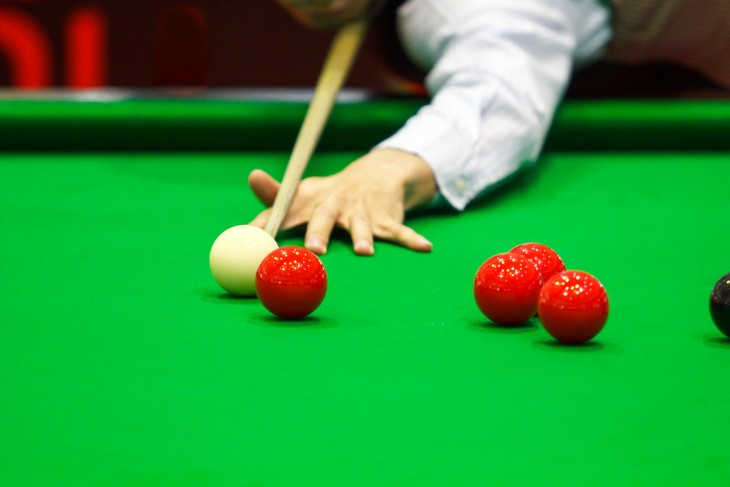- Types of Snooker Rests: Varieties and Uses
- The Standard Rest: Features and Applications
- The Spider Rest: Design and Tactical Usage
- The Swan Neck Rest: Unique Characteristics and Situations
- The Extended Spider: Advancements in Rest Technology
- Choosing the Right Rest: Considerations for Players
- Influence of Snooker Rests on Game Strategies
- Conclusion
The snooker rest, a vital yet often unheralded component of the sport, is a device that aids players in executing shots beyond their natural reach. It consists of a long, slender rod, typically made of wood or metal, with a flat, X-shaped head to support the cue. The rest head is designed to provide a stable platform, enabling the cue to glide smoothly while aiming and striking the ball. This tool becomes indispensable in situations where the cue ball lies too far on the table for a comfortable hand-held shot, or when intervening balls obstruct the direct path between the player and the cue ball.
While the primary purpose of the snooker rest is to extend reach, it also requires a specific skill set for effective use. Mastering the rest involves understanding the nuances of angle, elevation, and cue control. Players must adapt their stance, grip, and cueing technique when using the rest, often making these shots more challenging than regular hand-held strokes. The rest's significance in snooker is highlighted not only in its functional necessity but also in the skill and practice required to use it effectively.
Types of Snooker Rests: Varieties and Uses
In answering the question, "What is a snooker rest called?", it is crucial to recognise the various types available, each tailored to specific scenarios in snooker. The most common rests include the standard rest, spider rest, swan neck rest, and the extended spider, among others. The standard rest, typically the first choice for players, features a simple and straight design with a flat, X-shaped head. It is best suited for shots where the cue ball is just out of arm's reach, providing the necessary extension while maintaining a stable base for the cue.
On the other hand, the spider rest, identifiable by its raised arch and three pronged legs, offers a higher elevation. This design is particularly useful when the cue ball is obstructed by other balls, necessitating a lift over them. The spider rest allows players to execute these elevated shots with greater control and precision. Each type of snooker rest has its unique application and is chosen based on the specific demands of the shot. Familiarity with these rests and their uses is a hallmark of skilled snooker players.
The Standard Rest: Features and Applications
The standard rest, often simply referred to as 'the rest' in snooker parlance, is a fundamental tool in a player's arsenal. Characterised by its straightforward design, it consists of a long shaft with a flat, cross-shaped head. The simplicity of the standard rest makes it highly versatile, suitable for a wide range of shots where additional reach is required. The key to its effectiveness lies in the flat head, which provides a stable base for the cue, ensuring accuracy and control.
In practice, the standard rest is employed in various situations, from straightforward extensions across the table to more complex shots where direct hand placement is not feasible. Players must adapt their stance and cueing technique when using the standard rest, as it alters the dynamics of the shot. Mastery of the standard rest is seen as a crucial skill in snooker, with its frequent use in both amateur and professional games.

The Spider Rest: Design and Tactical Usage
The spider rest, another answer to the query "What is a snooker rest called?", is distinct in its design and function. Characterized by its elevated arch and three-legged support, the spider rest is designed to overcome obstacles on the snooker table. Its raised head allows the cue to be positioned above other balls, providing a clear path to the cue ball. This design feature is especially useful in situations where a cluster of balls blocks a direct shot, a common scenario in strategic snooker plays.
Tactically, the use of the spider rest requires a higher degree of skill and precision. Players must carefully balance the cue on the rest while maintaining control over the shot's power and direction. The elevated nature of the spider rest changes the cueing angle, necessitating adjustments in the player's aim and stroke. Mastery of the spider rest is often seen as a mark of an advanced player, reflecting the ability to handle complex and obstructed shots with finesse.
The Swan Neck Rest: Unique Characteristics and Situations
Moving beyond the standard and spider rests, the swan neck rest presents a unique solution in the snooker rest repertoire. Distinguished by its curved neck and fork-like head, this rest is designed for specific situations where neither the standard nor spider rest is adequate. The swan neck rest is particularly useful when the cue ball is close to the cushion and obstructed by other balls. Its curved design allows players to reach over obstructing balls while keeping the cue close to the cushion, providing both reach and precision in tight spaces.
The use of the swan neck rest demands careful handling due to its unique shape. Players must adeptly maneuver the cue through the forked head, ensuring a stable and accurate shot. The swan neck rest is less commonly used than the standard or spider rests, but its importance cannot be understated. It provides a critical solution in scenarios where other rests fall short, further illustrating the diversity and adaptability required in the game of snooker.
The Extended Spider: Advancements in Rest Technology
The extended spider rest represents an evolution in the range of equipment answering the question, "What is a snooker rest called?" This rest is a variant of the traditional spider rest but with added length and sometimes an adjustable extension. The extended spider is designed for extremely hard-to-reach shots, where neither the standard nor the regular spider rest offers sufficient reach. Its extended length enables players to bridge longer distances across the table, crucial in situations where the cue ball is positioned awkwardly far from the player.
In terms of tactical application, the extended spider requires a blend of precision and control, given its length and the leverage it provides. The challenge lies in managing the increased flex and sway due to the extended shaft, which can affect the accuracy of the shot. Players must therefore practice with this rest to understand its dynamics and incorporate it effectively into their gameplay. The extended spider, while not as commonly used as the standard rest, is an invaluable tool in a professional player's arsenal, offering solutions for challenging table layouts.

Choosing the Right Rest: Considerations for Players
Selecting the appropriate snooker rest is a critical decision that can significantly influence the outcome of a shot. Players must consider several factors, such as the distance to the cue ball, the presence of obstructing balls, and their own comfort with different rest types. The standard rest is often the first choice for its versatility, but specific scenarios may demand the use of a spider, swan neck, or extended spider rest. Understanding the strengths and limitations of each rest type is crucial for making the right choice.
Experience plays a key role in this decision-making process. Experienced players develop an instinct for which rest to use in various situations, a skill honed through practice and observation. They also consider the rest's stability and their own proficiency with it, as using a rest effectively requires a different technique compared to a standard hand-held shot. For beginners, it is advisable to practice with all types of rests, as this not only improves their skill set but also broadens their understanding of how each rest can be strategically employed in the game of snooker.
Influence of Snooker Rests on Game Strategies
The strategic aspect of snooker is significantly influenced by the use of various types of rests, often leading players to ponder, "What is a snooker rest called?" in specific game scenarios. The choice of a suitable rest can dramatically affect a player's approach to the game. For instance, the availability and mastery of the spider or swan neck rest can encourage a player to take on shots that would otherwise be considered too risky or impossible. This expands the range of tactical options available to a player, allowing for more aggressive or defensive play styles.
Moreover, the use of rests can also dictate the pace and rhythm of the game. A well-executed shot using a rest can turn the tide of a frame, enabling players to break out of difficult situations or continue a break when it seems to have ended. Conversely, a poorly executed shot with a rest can present opportunities to the opponent. Thus, understanding and effectively utilizing the different types of rests is not just about overcoming physical limitations on the table; it's also about strategically outmanoeuvring the opponent.
Conclusion
In conclusion, the various types of snooker rests, each with its unique name and purpose, play a pivotal role in the mastery of snooker. From the standard rest to the more specialized swan neck and extended spider rests, each tool offers distinct advantages and requires specific skills. The ability to choose and use the right rest in the appropriate situation is a hallmark of a skilled snooker player. It reflects not only technical proficiency but also a deep understanding of the game's strategy and nuances.
For more information:




.webp)






